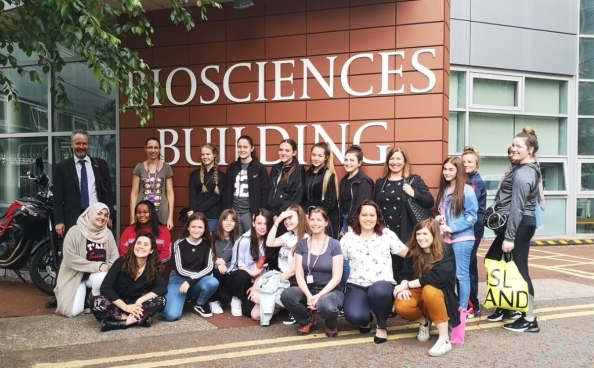Botanical University Challenge was dreamt up in 2016 by Dr Jon Mitchley (University of Reading) and Professor John Warren (University of Aberystwyth) to celebrate the plants in plant science. Anyone who has talked about biology with school children knows that most think plants are boring. This contrasts with the adult science world where plants are anything but boring. Once at university, some students change their opinion and embrace the challenges of plant science. Botanical University Challenge is an opportunity for students interested in plants meet up and show off their knowledge and interest.
The Institute of Integrative Biology at University of Liverpool researches fundamental and applied biology and over ten of the seventy-five research groups work with plants. National and international funders support their research in areas ranging from fundamental processes like photosynthesis, cell physiology, disease and taxonomy to agriculture and effects of climate change.
The University of Liverpool was therefore pleased to host the third Botanical University Challenge on 19 February 2020. The amount of organisation behind the two and a half hour event was substantial. Outside the university and away from the students, Professor John Warren led the task of getting the questions together. These involved words, pictures and, for the first time, real plant material. Devising a balanced set of questions with short answers for each round was a challenge in itself.
The venue was the University of Liverpool’s Botanic Gardens at Ness on the Wirral peninsular. Several staff at the garden were key to arrangements as well as providing plant material for some of the questions, particularly Jen Lemon-Parkins and Tim Baxter. Staff and students from the School of Life Sciences and Institute of Integrative Biology at University of Liverpool, notably Drs Raj Whitlock, Peter Walley and James Hartwell, were involved with planning. On the day Dr Christoph Hahn and undergraduates Tracey Houghton and Roberta Brewster were essential for organising the teams and making the event run smoothly.
There were a record seven university teams in the competition – Edge Hill, Lancaster, Liverpool, Manchester, Manchester Metropolitan, Reading and York. In addition, the Botanical Society of Britain and Ireland supported the event, especially publicising it through a network of local societies. The result was a comfortably full lecture theatre on a wet Wednesday afternoon to enjoy the teams demonstrating their knowledge and quick wits.
The questions ranged from the deceptively simple (What is the name of the plant or molecule in this picture?) to the more difficult (During photosynthesis where does the evolved oxygen come from?). Recalling information is definitely more difficult while being stared at by an audience but the quizmaster Emeritus Professor Alan McCarthy kept the teams answering with a mixture of charm and authority. Both reaction times for pressing a buzzer and knowledge were tested during the afternoon, and a coffee-break after the initial preliminary rounds was essential. Several of the teams were competing for the first time, but were not daunted even though the University of Reading team won (again), with University of Liverpool the runner-up (again).
Comments from the audience showed how much they enjoyed the event, and how impressed they were by the students.
Plans for Botanical University Challenge 2021 have started, with the venue again likely to be in northern England.

















































